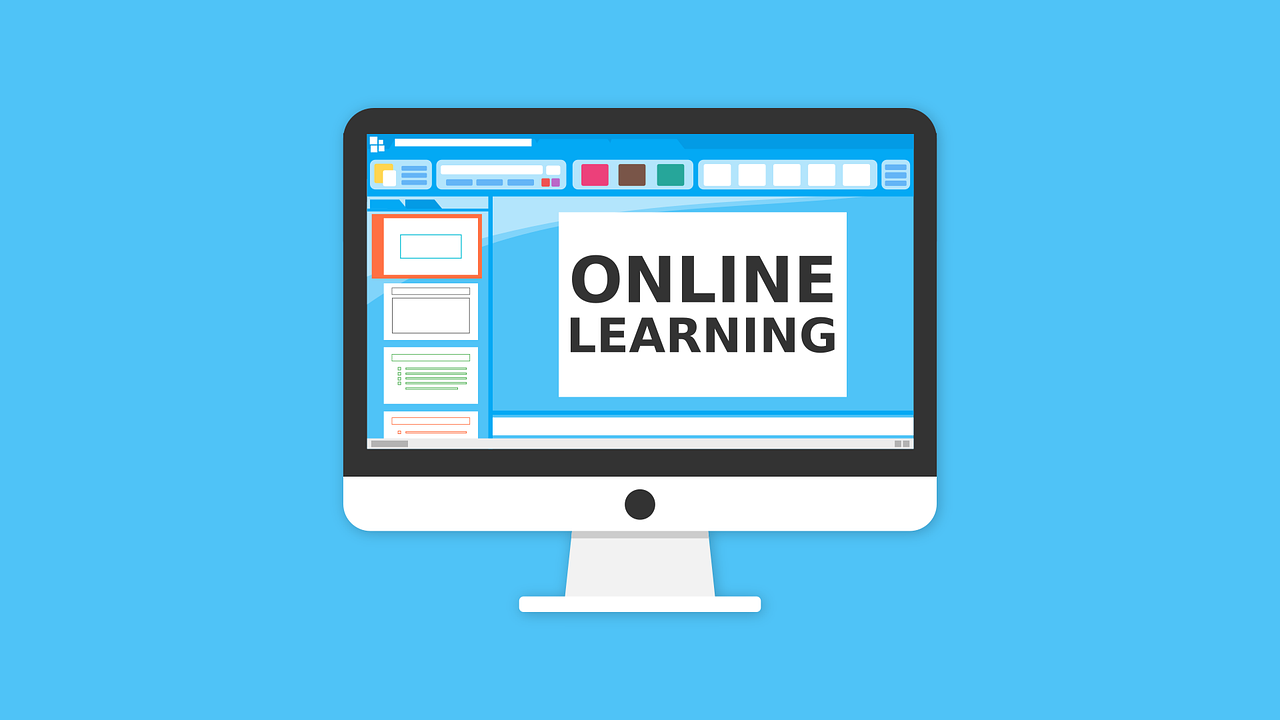Meta: It is impossible to envision a world without technology advancement. These inventions indeed transform our lives – but for better or worse? Let’s dive right in!
Intro
Technology advancement has seeped into our daily routines for so long that we sometimes take it for granted. Indeed, compared to past generations, most fundamental tasks have become much more straightforward nowadays – owing to modern gadgets and devices. Still, along with evident benefits, there are also certain drawbacks.
So how does technology impact our functioning? This article will lend you some pointers.
What Are The Benefits of Technology Advancement?
Have you ever paused – even just for a moment – to consider how our world might function without technology? We think that few have ever done so – which makes sense, given that it has existed for decades. But upon looking back, the transformations they wrought are truly incredible.
1. It Improves Our Communication

It improves our communication – Source: pixabay.
What is the role of technology in facilitating communication? The answer must be more than palpable. Needless to say, modern-society networking has become astonishingly rapid and straightforward.
It is pretty remarkable to observe the improvement of our transmission approaches over the decades. In history, the best tactic of remote contact was via letter, faxes, or wired telephone. Today, there are tons of more efficient platforms to keep in touch with your loved ones.
Such a diverse array of alternatives always prove handy, particularly for aging people or those living by themselves. Through lively photographs and real-time updates, you are constantly informed of what your family and friends are currently up to.
Social Networking Sites
Anyone who has never heard of Twitter, Skype, or Facebook must have been living under a rock. After all, these labels have established themselves as household names. Deeply ingrained in our daily lives, they are here to stay for at least five more years.
Why are they so well-received? The primary reason is that social media is always transmitted at the same rate and speed. Whether both parties live nearby or half a globe apart, it does not matter. You may even send audio messages via these systems, dispatched in nanoseconds.
Apps for Messaging
Cell device usage has also undergone a major shift. Apart from social networking sites, tons of communication-focused apps are also at play. They are tailored for non-fans of social media. WhatsApp, for instance, allows smooth chatting and even WiFi calls.
It is a common approach to send SMS messages via a cell operator. Still, lots of handsets activate an independent messaging platform. One such example is iMessage, which facilitates free connection among WiFi-based iPhones.
And over the years, iMessage has become more and more intricate. Transmitted photographs and videos are only the beginning of what they can accomplish. The app has been extended to games, voice notes, and numerous app linkages for faster data transfer.
Smartwatches

Smartwatches – Source: Flickr.
Communication has elevated beyond smartphones and computers. Dialogues via tables, voice control, and smartwatches are a breeze, too.
Smartwatches are a comparatively recent invention. These watches combine almost all smartphone functionalities into simple touch-screen gadgets. They send notifications, track your exercise, and even let you text and call others.
Google Meetings and Zoom
Face-to-face meetings have always been favored over other alternatives. As per most participants, in-person gatherings foster more solidarity among members. They also provide better opportunities for self-expression.
That sentiment is, in fact, accurate. However, we must acknowledge that physical meetings are not always feasible. Inconveniences associated with transportation are one thing. The continuing COVID-19 epidemic is another example of why online meetings may be much more convenient.
Zoom and Google Meeting are two of the most notable examples of efficient online platforms. Both are equipped with several functions that compensate for the absence of physical contact. These features result in increased workplace efficiency.
First of all, the screen-sharing features promote streamlined discussions and evaluations of different ideas. They are accompanied by a micro button, allowing people to express their opinions immediately (instead of just typing them out in the chat box).
Moreover, contrary to certain apps – which display dark avatar screens – the incorporated cameras in Zoom and Google showcase everyone’s faces to boost the overall vibe of an actual meeting.
2. It Promotes Flexible Learning

It promotes flexible learning – Source: pixabay.
Long gone is the outdated assumption that a successful classroom must have a single instructor and several pupils. An online course with clear curriculums and well-mapped learning paths can easily propel learners to their goals. There is no need to step out of the house.
At the moment, millions of online courses are offered in numerous subjects and fields. Adjusting your learning speed based on distinctive preferences and skills is more than possible. Even better, they are also time-efficient; for instance, you may watch a tutorial clip while taking a bath or doing light exercises.
This level of adaptability is a significant improvement over conventional classroom settings. The latter rarely cater to individual strengths and weaknesses.
3. It Offers Alternatives for Money Transfer and Bill Payment

PayPal – Source: pixabay.
No longer are the days one must visit a bank for money withdrawals or transfers. Numerous banks have already enabled online transactions for millions of their clients worldwide. Venmo and PayPal are two notable representatives that permit currency exchanges via the Internet.
Bill payment has also been streamlined as a result. Tired of having to memorize all the deadlines? No problem; you may automatically schedule repayments whenever they are due. It is possible to handle all of your essential bills online using smartphones and a banking app.
These platforms are particularly beneficial for elders who suffer from memory lapses. Their carers or family members may help set up regular bill payments, ensuring they are fulfilled on time.
Thanks to Apple Pay and Google Wallet, it is even feasible to purchase items with nothing more than your smartphone. Such applications safely connect mobile phones and bank accounts, eliminating rigorous transitional stages.
Keeping up with these advances may seem tedious. But they narrow your focus to fewer goals and smoothen most daily tasks. Going out without your physical wallet used to be a frowned-upon tactic. Nowadays, you can leave it at home all day, and no hassles will ever occur!
4. It Diversifies Platforms for Movie and Show Watching

Netflix – Source: flickr.
Technological advancements have transformed our television viewing alternatives. Cable providers constantly update themselves with new functionalities, which entail rewinding and pausing modes. You may also store your favorite shows for later watch. The matters of when and how are entirely up to your hands.
Streaming Services
Netflix, Amazon Prime, and Hulu provide low-cost access to cable TV series and original content. Disney has also entered the game, recently announcing the launch of their film service Disney+.
Streaming is another mainstream approach, which operates via the Internet rather than cable. For numerous customers, it serves as one of the most economical tactics. There is a good reason for such beliefs. After all, you are not required to pay for enormous cable bundles that might include channels you never watch.
Moreover, streaming providers organize their films and television series by subgenre. Hence, it is much simpler to browse and discover your favorites. Even on-the-go streaming is more than easy – all we need is some Internet connections.
Major streaming platforms we mentioned above also cover mobile apps, facilitating direct downloads. So even in the worst-case scenario (no Internet!), you will encounter no trouble viewing these downloaded movie shows.
Even better, an increasing number of televisions are specifically geared at streaming. “Smart TVs” have built-in WiFi, offering smooth access to streaming services. Their extra programming might help save some of your pennies.
Most importantly, these TVs never get rid of traditional cable channels – suited to families whose members have different preferences.
Upgraded Visual and Sound Qualities
Furthermore, new televisions present a visual quality beyond what you have seen in the past. A standard definition TV featured a horizontal resolution of 720 pixels. Meanwhile, today, 4k resolution televisions are increasingly prevalent, equating to 4,000 horizontal pixels.
What does it mean? The answer is obvious: Picture definitions of modern TVs are approximately six times better, providing a top-notch experience. Your enjoyment and delight will boost to new peaks.
Is there any elder with hearing deficits in your family? Then they might benefit from TV Listening Devices, which deliver greater sound quality. With our current technological advancement, nothing is impossible!
5. It Updates Our Transportations

Uber – Source: Flickr.
Upon the Wright brothers’ invention of airplanes in 1903, everyone believed that was the furthest advancement humankind could ever reach in terms of transportation.
But to our amazement, rooms for upgrades have never ceased. As consumer demands diversify, the number of alternatives also surges to catch up. Here are the two most notable options that facilitate your traveling!
Automobiles without Drivers
Driverless vehicles have been under development for years, though the technology has not yet reached widespread use. Once it becomes mainstream, such inventions will result in fewer traffic accidents.
Furthermore, transit would be more accessible to all types of customers. Those with impairments – or who live in regions lacking public transit – will enjoy tremendous support. The sensors are expected to determine when driverless automobiles should stop, accelerate, turn, and park.
As established, this technology has not yet been mastered. Still, we are already observing some promising indications in the early stages of most new automobiles on the market today. Since the autonomous systems are not fully expanded, these vehicles are referred to as “driver help” for now.
So what can they do at present? With the inclusion of smart cameras, they are a wonderful assistant during car parking. These vehicles identify blind spots and send a notification when you stumble into the wrong lane. In the case of higher-quality products, the whole parking process will automate – even parallel car parks.
Ride-sharing
Till autonomous vehicle technology expands, commutation via aircraft, trains, and conventional autos will persist. Some of these possibilities have become more affordable due to technological advancements. Ride-sharing applications are cases in point.
Renowned companies such as Lyft and Uber are well-known for their ride-sharing services. These programs let users summon a ride from everywhere – exactly like a cab.
What is the most outstanding edge of such apps, you ask? We are delighted to tell you that they can track the driver’s whereabouts through a GPS map. Furthermore, the rides are accessible from all corners of the globe – even in locations where cabs are often unavailable.
How so? That is because anyone can apply to become a driver – provided that they own contemporary automobiles and satisfy the company’s background check. These rules are expected, as certain individuals are cautious about accepting rides from strangers.
The apps entail grading systems to secure excellent driver performances. Major security benchmarks are also updated frequently to facilitate riding safety.
What Are The Disadvantages Of Technology Advancement?
1. Job Losses

Job losses – Source: Flickr.
Job efficiency has grown tenfold with technology. Experts have always cited that step-up as a reason for its possible replacement of human work. After all, technology ensures that most work formerly accomplished by people can now operate via machine systems.
As a result, job losses might turn into a new crisis. How can we maximize productivity while reducing unemployment rates? That will be a tough issue to tackle for years to come.
2. Excessive Dependencies
Machines are perfectly capable of handling the most basic tasks. Doing some calculations? Enter data into your computer. Unable to recall a deadline? Schedule it in a note-taking app. Have so many passwords for tons of applications that it is tough to keep track of them all? Password managers may be beneficial.
We cannot dispute that technologies have alleviated a significant amount of wasted time. However, excessive reliance on them would put a detrimental stop to our brainstorming and challenge-tackling capabilities.
And that is quite dangerous. Once unexpected hassles arise, most people will get frantic and unsure how to proceed – since they are so used to letting machines do all the work for them.
3. Privacy Concerns

Privacy – Source: pixabay.
Most people communicate with their pals through social media and messaging applications. Thus, the risk of sensitive info leakage is greater than ever. A few simulated hacking attempts would disclose every private information in a blink.
Once those data fall into the wrong hands, it is quite frightening to imagine what the hackers might do with them.
Conclusion
This article has detailed all the transformations that technology advancement inflicts upon our daily schedules. Though its benefits far outnumber the drawbacks, striking a delicate balance is crucial. Such tactics ensure you do not let technologies take hold of your decision-making.
Write to us if there are questions. Our comment section is always open!
